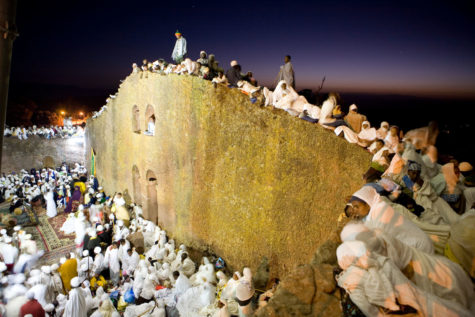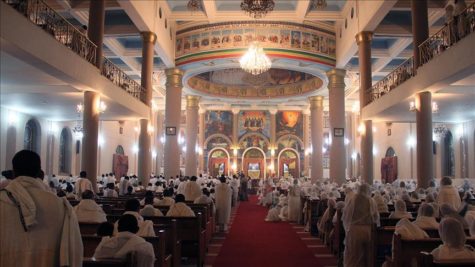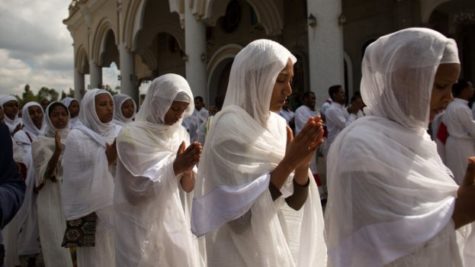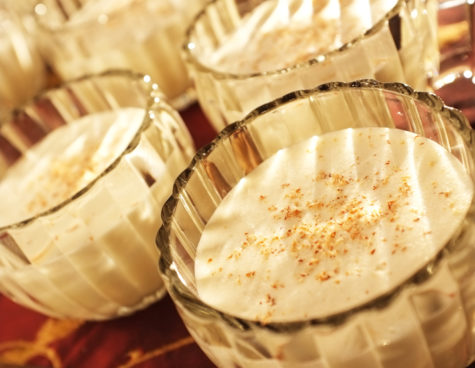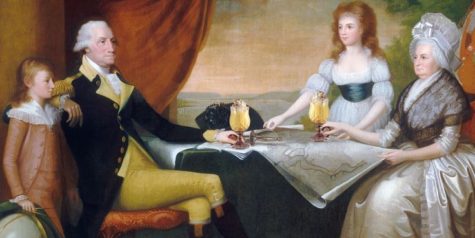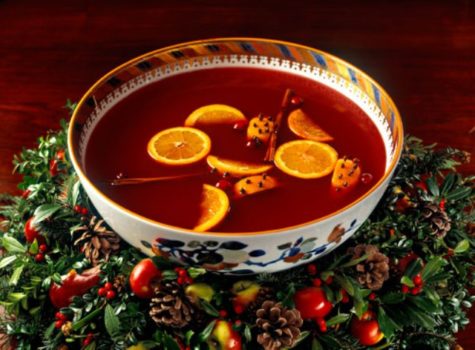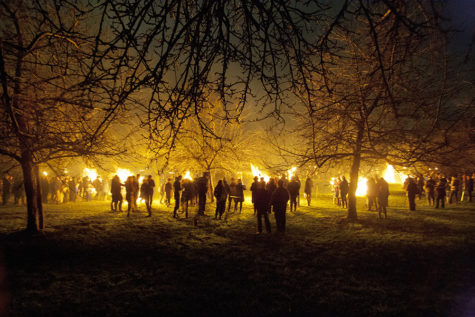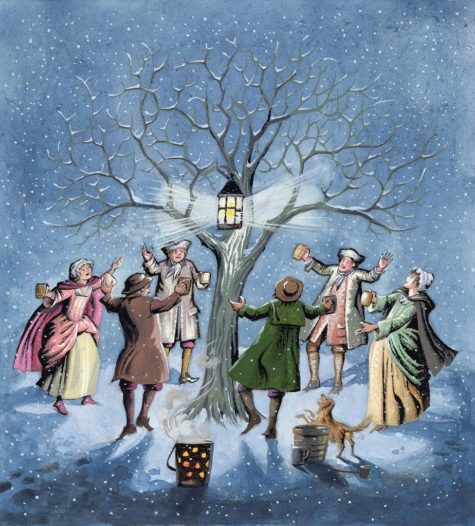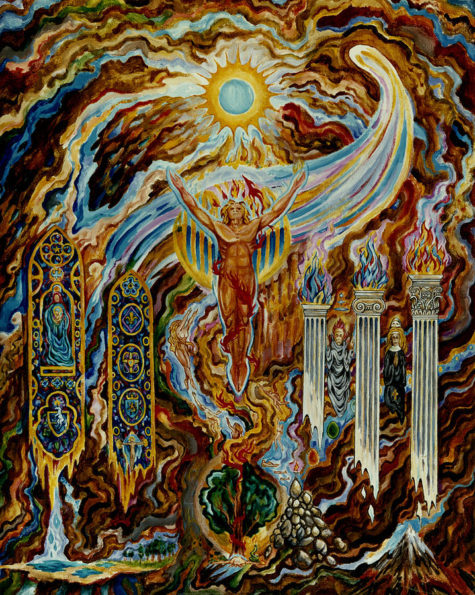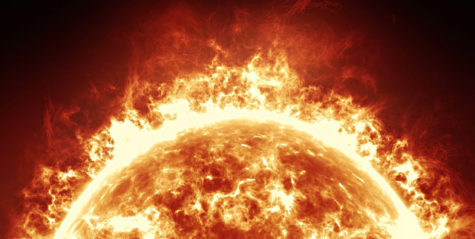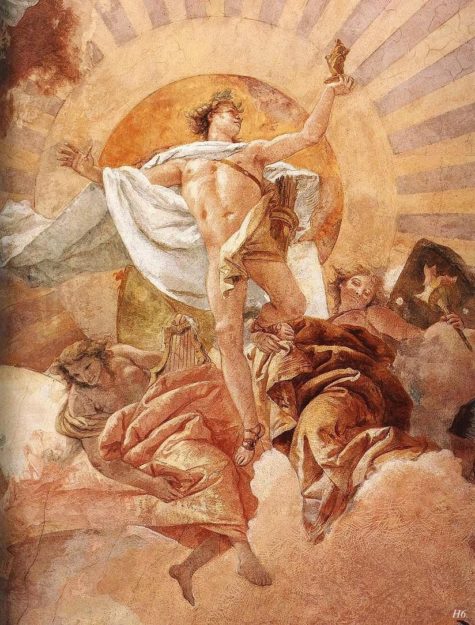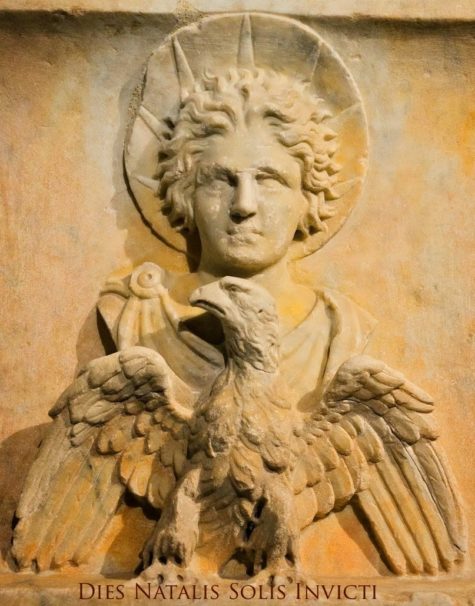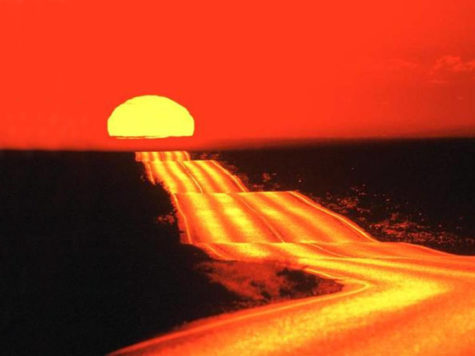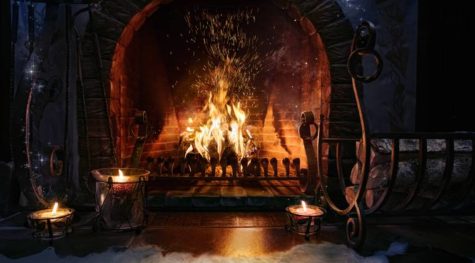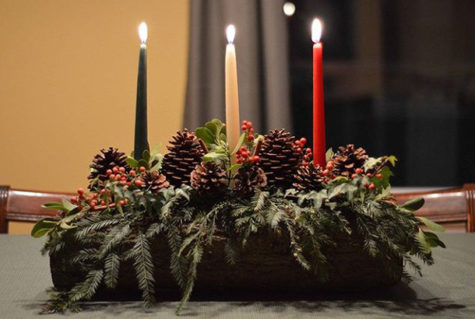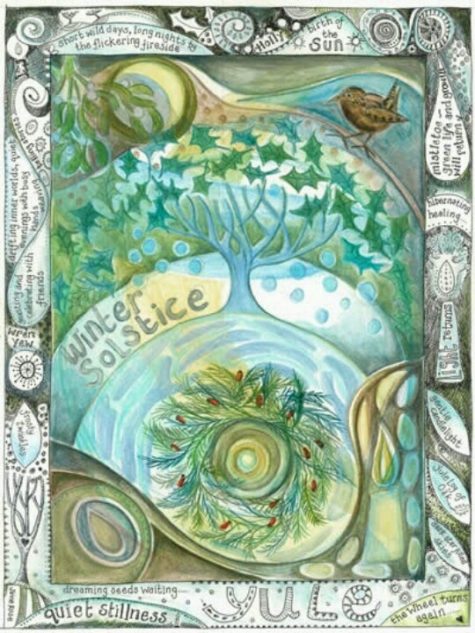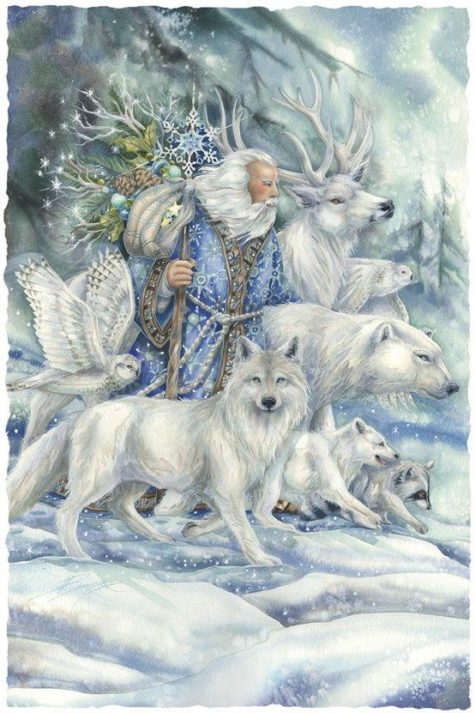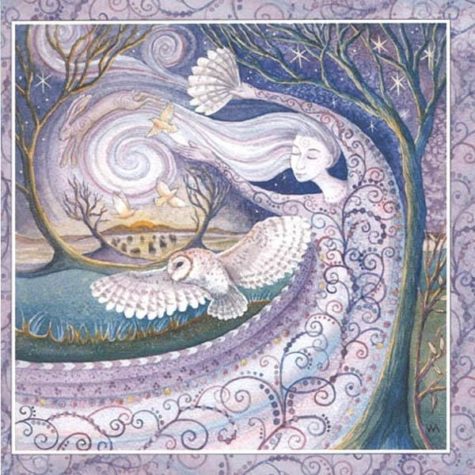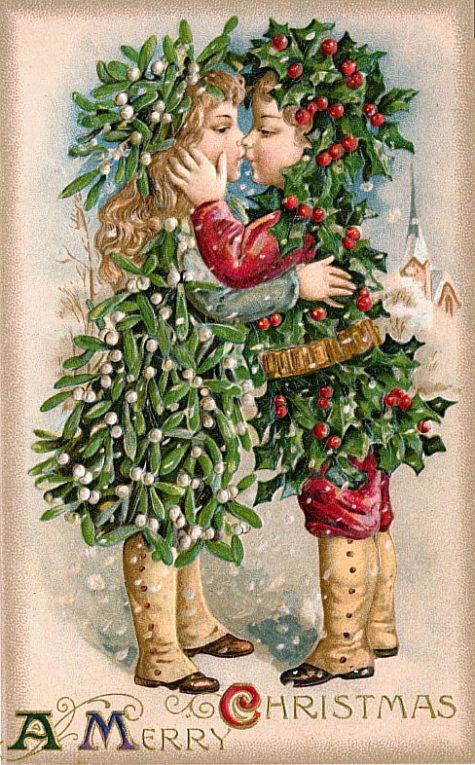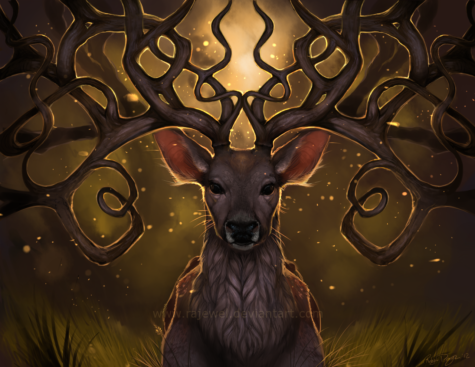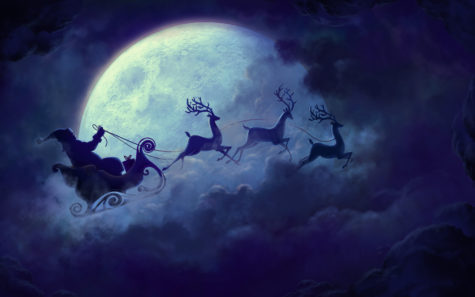Christmas Celebrations
Ethiopia follows the Ethiopian calendar, consequently Christmas or Genna ((also known as Lidet, or “birthday”) falls on January 7th,
Like most other Christian holidays, Christmas in Ethiopia, is celebrated in its own unique way. The main ceremonial activities of the holiday center around local Ethiopian Orthodox churches (though Protestants and Catholics also celebrate), which hold late-night services on Christmas Eve lasting well past midnight.
People dress in white and attend church. Everyone receives a candle as they enter the church. The candles are lit, and everyone walks around the church three times. People stand during mass. Males and females are separated.
Traditional liturgical singing marks these services, as does chanting performed by priests and deacons wearing colorful robes with gold and silver accents. Many people travel by foot from church to church, taking in various services until the light of dawn announces the arrival of Christmas morning.
The first Christmas meal is often an early breakfast, eaten by bleary-eyed congregants after returning home. The light meal likely starts with juice made from flaxseed (to oil up the intestines after 40 days of fasting) before moving on to the famously spicy chicken stew doro wot, and it most certainly includes appropriately strong Ethiopian coffee to help welcome the new day.
Later on, friends and relatives gather to enjoy a full Genna feast, usually involving a freshly killed lamb for mutton tibs and traditional beverages such as tej (honey wine). And though gift-giving does not figure very prominently in the Ethiopian Christmas tradition, the purchase of new clothing for the occasion — particularly for children — is seen as an important part of the festivities.
Several hundred families walking toward churches dressed as a sea of brilliant white cotton is a common sight throughout the country.
Perhaps the most unique aspect of the Ethiopian Christmas tradition is that it is associated with a sport, also called Genna, that is most widely played during the holiday season. According to Ethiopian legend, when the shepherds of the biblical Christmas story were informed of the birth of the Messiah, they expressed their overwhelming joy by using their staffs to break into a spontaneous game that resembles field hockey. The afternoon of Genna is filled with matches of the game, played mainly by young men, and potentially other sporting activities such as horse racing.
Although Genna is observed by Christians across Ethiopia, the most famous Christmas celebrations arguably occur in the historic city of Lalibela. There, crowds of up to 100,000 pilgrims flock to watch immaculately dressed Orthodox clergy perform the woreb lining the steep ledges surrounding the famous rock-hewn churches, carved over 800 years ago.
Accompanied by a slowly building tempo of traditional church drums, metallic sistrum and pilgrims’ clapping, they lead the crowd in an intensely moving musical performance about the birth of Jesus Christ. For though its execution may look different here than in other parts of the world, the focus of Ethiopian Christmas remains the same: to celebrate the birth of a Savior who came to take away the sins of the world, and to bring peace to all mankind.
Sources:
While culinary historians debate its exact lineage, most agree eggnog originated from the early medieval Britain “posset,” a hot, milky, ale-like drink. By the 13th century, monks were known to drink a posset with eggs and figs. Milk, eggs, and sherry were foods of the wealthy, so eggnog was often used in toasts to prosperity and good health.
Eggnog became tied to the holidays when the drink hopped the pond in the 1700s. American colonies were full of farms—and chickens and cows—and cheaper rum, a soon-signature ingredient. Mexico adopted the very eggnog varietal “rompope,” and Puerto Rico enjoys the “coquito,” which adds coconut milk. The English name’s etymology however remains a mystery. Some say “nog” comes from “noggin,” meaning a wooden cup, or “grog,” a strong beer. By the late 18th century, the combined term “eggnog” stuck.
Eggnog purists argue that those who don’t like the Yuletide drink have simply never tasted the real thing. Sugar-laced supermarket versions can’t hold a candle to the homemade goodness, especially since the US Food and Drug Administration permits that the drink can be made from as little as 1% egg yolk. That often borders on “milknog” or egg flavoring.
Our founders would have had none of that. George Washington even penned his own famous heavy-on-the-alcohol eggnog recipe. Only one problem: he forgot to record the exact number of eggs. Cooks in his era estimated a dozen would do:
One quart cream, one quart milk, one dozen tablespoons sugar, one pint brandy, 1/2 pint rye whiskey, 1/2 pint Jamaica rum, 1/4 pint sherry—mix liquor first, then separate yolks and whites of eggs, add sugar to beaten yolks, mix well. Add milk and cream, slowly beating. Beat whites of eggs until stiff and fold slowly into mixture. Let set in cool place for several days. Taste frequently.
Here’s another recipe:
Ingredients:
- 12 eggs
- 1 1/2 cups sugar
- 1/4 tsp salt
- 1 qt heavy cream
- 1 qt milk
- 1 qt bourbon whiskey
- 1 cup rum
- nutmeg
Separate the eggs. Beat the egg whites together until stiff, then beat in a 1/2 cup of sugar. Beat the egg yolks until pale and light. Add the remaining cup of sugar and a 1/4 tsp of salt.
Combine the egg mixture with the milk and the bourbon. Beat well, then add the cup of rum. Pour into a jug and store in a cool place. Shake or stir thoroughly before serving. Ladle into small cups and sprinkle with nutmeg. Serves 30.
Note:
Make this about a week before serving to allow it to mellow. Scotch whiskey or rum may be substituted for the bourbon.
Death By Eggnog
And as you enjoy your holiday cheer, please drink responsibly. As you can see in the following report about Death By Eggnog, too much of a good thing can be … well… deadly!
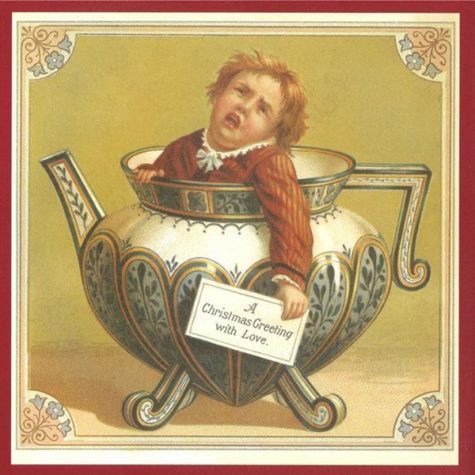
The testimony and investigation into the death of Addison Williams, dated 18 January 1873, can be found in the Bedford County Coroners’ Inquisitions, 1813-1899. The collection is open for research and available at the Library of Virginia.
On 25 December 1872 in Bedford County, VA, Williams paid a visit to the home of Cornelia and Charles Abram. He arrived “about light” and was given a dram of whiskey by William Ogden. Ogden then made a gallon of eggnog, and Williams “drank a glass and repeated several times.” Everyone present “drank eggnog freely,” but Williams enjoyed it most of all, drinking more than the rest of the party.
He “left the house and threw up,” only to come back and take another drink. Afterwards, Williams “left in a run, as in a prank,” never to be seen again. Williams “had commenced showing he was under the influence of liquor,” but no one at the party thought him too drunk to make it home. As one party goer put it, “…as I thought he was going so well it was useless for me to go with him.”
Unfortunately, Williams could have used a little assistance. He was found on Christmas morning “dead and frozen” mere yards from his house. The resulting coroner’s inquisition determined Williams came to his death as a result of “being exposed to the cold after drinking a large quantity of mean whiskey.”
Sources:
For the Wassail’s Baked Apples:
- 1 dozen cooking apples
- 1 cup brown sugar
- 3 tablespoons cinnamon
- butter or margarine
- 3/4 cup boiling water
- 2 tablespoons sugar
Core apples and place in an 8 X 8 inch baking pan. Mix sugar and cinnamon, fill apples with mixture, dot tops with butter. Add boiling water and sugar to pan and bake at 375 degrees Fahrenheit for 40 to 60 minutes.
For the Wassail:
- 1 cup water
- 4 cups sugar
- 1 tablespoon nutmeg, grated (for luck)
- 1/2 teaspoon mace
- 2 teaspoons ginger (to prevent arguments)
- 6 whole cloves (to influence people in high places, and for luck)
- 1 stick cinnamon (same as cloves)
- 6 whole allspice
- 1 dozen eggs, separated
- 4 bottles sherry
- 2 cups brandy
Combine first eight ingredients in a saucepan and boil for 5 minutes. Beat egg whites until stiff. In a separate bowl, beat egg yolks. Fold whites into yolks. Strain spice mixture into egg mixture and stir. Combine sherry and brandy and bring almost to a boil. Gradually add liquor to spice and egg mixture, stirring rapidly as you do so.
Before serving, add baked apples to foaming liquid. Serve in a large cauldron.
“Welcome everything! Welcome all alike what has been, and what never was, and what we hope may be, to your shelter underneath the holly, to your places around the Christmas fire, where what is sits.”
~Charles Dickens
The wassail—a centuries old tradition from Great Britain—is a joy-filled party celebrating the Winter Solstice, Christmastime and happy tidings. Indeed, many of the traditions of this likeable event are the originators of well-known seasonal classics (like caroling, for one).
The word wassail itself comes from the old Norse “ves heill,” which literally means “be healthy.” It is a toast of goodwill and is at the heart of what wassailing is all about.
These days a wassail is a party, but, in centuries past wassailing mainly involved people singing carols from door-to-door, such as “Here We Come a Wassailing” or “We Wish You a Merry Christmas.” Sound familiar? The carolers would carry a bowl of wassail, which was a hot mulled wine or some kind of warm, apple-based beverage. Often people floated a piece of toasted bread on top of the steaming wassail, which was the origin of our modern-day expression “I would like to propose a toast.”
When carolers entered a home they would sing, share the wassail and receive eats and drinks themselves (such as plum pudding or shepherd’s pie), at which time toasts for a merry Christmas and happy tidings for a new year would be exchanged by all.
One legend about how Wassailing was created, says that a beautiful Saxon maiden named Rowena presented Prince Vortigen with a bowl of wine while toasting him with the words ‘waes hael‘. Over the centuries, a great deal of ceremony developed around the custom of drinking wassail. The bowl was carried into a room with a great fanfare, a traditional carol about the drink was sung, and finally, the steaming hot beverage was served.
Today, wassails are still held in homes or as public celebrations in many countries throughout the world, such as Great Britain, Canada and the U.S. The celebrations can be as simple as gathering some friends for hot cider to more elaborate celebrations involving the production of short plays (called mummer plays) or caroling through apple orchards.
To host your own wassail:
- Invite friends and family to share the occasion.
- Dress up the house for a festive holiday occasion.
- Serve a warm beverage, such as spiced apple cider, mulled wine or the like, from a bowl. This is a must! Otherwise, it’s not really a wassail.
- Serve food that’s warm and hearty, like beef pot pie or warm potato wedges with bacon, cheese and sour cream toppings. Christmas pudding or any kind of spice cake or pound cake should do nicely for dessert.
- Play festive Christmas music in the background. (Or, better yet, sing along with carols if so inclined.)
- Partake in games that involve teams of players, like charades, Cranium, Pictionary or Taboo.
The object is simply to have a good time and share the joy of the season!
One of the most popular Wassailing Carols:
A Wassail Bowl
Here we come a-wassailing
Among the leaves so green,
Here we come a-wassailing,
So fair to be seen:
Love and joy come to you,
And to you your wassail too,
And God bless you and send you,
A happy New Year,
And God send you,
A happy new year.
Here is a simple wassail ceremony.
- Heat a large container of ale or beer – about 3 or 4 pints.
- Add 1/2 cup sugar and 1/4 cup mixed spices (cinnamon sticks and whole cloves are also excellent)
- Cut up 2 or 3 small sweet apples and add those.
- Add 1 1/4 cup of pineapple juice and the same of orange.
- Squeeze 2 lemons into the brew.
Place over a slow flame; then, before it begins to boil, take off the heat and whip up some cream. Let this float on top of the brew like foam. Put into a suitably large bowl (the more ornate the better).
Toast several slices of bread, if you have fruit cake you can use pieces of that instead.
Now, with a few friends, go out to the tree or trees (see note below).
Dip pieces of toasted bread into the brew and place in the branches of the tree. Hang pieces of bread and cake from the higher twigs to encourage robins (guardian spirits of the trees). Bend the lower branches down and dip their ends in the brew.
Wet the roots liberally with the brew. Pass the rest around and when everyone is thoroughly warmed up, sing a wassailing song. Lift your glasses to the tree and shout “Huzzah!” three times as loudly as you can.
Note:
These don’t have to be apple trees, since any tree will benefit from a well-intentioned blessing, but it is traditional to wassail fruit-bearing trees. You can wassail the trees in your yard, near your home, or trees in some previously selected area.
The Sun will “die” at midnight on December 21, but don’t panic, it will “rebirth” on midnight December 24. This occurs at the beginning of Winter every year for the past 4.6 billion years. It is called the Winter Solstice, “sun stood still”, and is considered the shortest day in the year in terms of hours of sunlight.
It is a three-day period when the hours of daylight are at its shortest and the hours of night (darkness) are at its longest. Noticeably, the sun progressively sets earlier each evening after June 22 (The Summer Solstice – longest hours of sunlight) and night fall comes the earliest on December 21. Hence daylight savings time put our clock one hour back to make up for the shorter hours of day light.
Needless to say, the Sun is vital to our life here on earth and is one of the most important star in our world. It is the nearest star to Earth and is believed to be formed 4.6 billion years ago. It is the most important source of energy for life on Earth and its diameter is about 109 times that of Earth, with mass about 330,000 times that of Earth. The sun accounts for about 99.86% of the total mass of the Solar System and is so large that about 1,300,000 planet Earths can fit inside of it.
Awesome.
WOW.
Worthy of Worshiping?
Sun Worship
Well, our ancestors did just that more than 9000 years ago and it is still being done today. The ancients selected December 21, the Winter Solstice as the ideal time to invoke the sun. Maybe if you were living in the north pole and had long, dark harsh winters to deal with you might want to invoke the sun too.
In the solar myth, the death of the “old sun” occurs as the length of daylight decreases and becomes its lowest at the Winter Solstice which begins on the midnight of December 21 (early morning December 22) and ends on Midnight December 24 (early morning December 25). The sun stop moving south on December 22, it is then at its lowest point in the Northern Hemisphere, residing in the vicinity of the Southern Cross. It stays at this lowest point for three days (December 22, 23, 24 appearing to not moving south or north and was considered “dead”).
It “returns to life” at midnight on December 24/ early morning December 25, when it begins its northern journey again and the hours of sunlight start to lengthen. Therefore, the ancients said that the SUN was born on December 25. As a result, festivals and feasts were done to honor Sol or Mithra.
Interestingly, on December 24, Sirius (star in the east and brightest star in the night sky) aligns with the three brightest Orion belt stars called the Three Kings, (Alnitak, Alnilam and Mintaka) and on December 25, these all point to the location where the sun will rise on earth that day. In essence, the three kings follow the star in the east to find the sunrise (birth of the sun).
Solar deities and Sun worship can be found throughout most of recorded history in various forms, including:
- Ra ~ Egypt,
- Mithra ~ Persia,
- Apollo ~ Rome
- Surya ~ India
- Amaterasu ~ Japan
- Sol ~ Germanic
- Tonatiuh ~ Aztec
- Jesus ~ Christianity
Birthday of the SUN or the SON?
As a Baptist, I grew up with the belief that December 25 is the birthdate of Jesus Christ and as such we worship and acknowledge it as Christmas. Indeed, Christmas is big— very big. The entire Island of Jamaica comes to a virtual standstill. Schools and colleges are closed; businesses shut down to give their employees time off; many families plan trips and get-togethers; Church attendance increase; and gifts are given by even those who were scrooge all year long. Maybe you recall, the Christmas Carol that even erroneously say “ Long time ago in Bethlehem, so the Holy Bible said, Mary’s boy child Jesus Christ, was born on Christmas Day”
However, recall all these activities were already being done in Rome, Babylon, Persia, Greece, and Egypt to acknowledge and worship the birth day of Sol Invicta (the Unconquered Sun) up to 4000 years before Jesus Christ was born. It then begs the question, whose birthday are we celebrating on December 25? Does Jesus the SON share the birthday with the SUN?
How did the birth of the Sun get changed?
According to scriptures, Jesus Christ was whipped, spat upon, publicly dishonored then killed by the Church (Caiaphas the high priest) and the State (Pilate the Roman governor). After Jesus’s death, his followers had to go “underground” as they too were meeting the same or worse fate than Christ. These “Followers of Christ” (not Christians as Christianity wasn’t start as yet) were stripped and flogged with whips, stoned to death, and persecuted.
Yet, despite the persecution, the “Followers of Jesus” went underground and their church started to flourish and soon became a major concern to the Roman government. They were blamed for spreading “mischief” that Jesus Christ was king and lord, and was crucified to save our souls. Followers of Christ were also accused of destabilizing the economy and threatening civil war.
To stop the possibility of civil war and at the same time keep the existing pagan occult worshipers, Constantine, in AD 326 at the Council of Nicaea, “married” Christ like sentiments (name and life story) with that of Rome’s mysticism and called it Christianity. This new “Christianity” became the official religion of Rome and the SUN was replaced by the SON with Isis and Osiris became Mary and Jesus. December 25 was then decreed as Jesus birthday with the Spring Equinox full moon in March/April designated as his death day.
In short, today’s Christianity is an unholy marriage of Roman Idolatry and Christ sentiments designed by Constantine to maintain religious and political if not economical order and harmony in the empire.
Sol Invictus (Unconquered Sun) is a very important star in our solar system without a doubt. As the main source of energy, we can understand the need to recognize it and maybe even glorify its daily presence in our lives. Many people deliberately and some unwittingly worship and glorify the SUN between December 21 – 25 to show appreciation.
If you are interested, a Ritual to Bring The Sun can be found in the Book of Shadows, and a number of invocations, prayers, and poetry specifically dedicated to the Sun can be found at Widdershins.
Honoring The Sun Every Day
One really great way to honor the Sun (and yourself) is with a series of body positions called Sun Salutations. An excellent time to begin this ritual is on the morning of the Winter Solstice just as the sun is rising, (facing east). If a sunrise Sun Salutation isn’t possible, but you want to include this in your morning routine, pick a time before breakfast, and that will be fine.
The Sun Salutation, (Surya Namaskar), is a series of 12 yoga postures performed in a single, graceful flow. Each movement is coordinated with the breath. Inhale as you extend or stretch, and exhale as you fold or contract. The Sun Salutation builds strength and increases flexibility. Different styles of yoga perform the Sun Salutation with their own variations. However, the flow presented below covers core steps used in most styles.
For the series below, a single round consists of two complete sequences: one for the right side of the body and the other for the left.
Sun Salutations
Even on days when you think you have no time for yoga, try and do at least one or two rounds of the Sun Salutation. You’ll feel the difference.
 1. Mountain:
1. Mountain:
Begin by standing in Mountain pose, feet about hip width apart, hands either by your sides or in prayer position. Take several deep breaths.
 2. Hands up:
2. Hands up:
On your next inhale, in one sweeping movement, raise your arms up overhead and gently arch back as far as feels comfortable and safe.
 3. Head to knees:
3. Head to knees:
As you exhale, bend forward, bending the knees if necessary, and bring your hands to rest beside your feet.
 4. Lunge:
4. Lunge:
Inhale and step the right leg back.
 5. Plank
5. Plank
Exhale and step the left leg back into plank position. Hold the position and inhale.
 6. Stick
6. Stick
Exhale and lower yourself as if coming down from a pushup. Only your hands and feet should touch the floor.
 7. Upward Dog
7. Upward Dog
Inhale and stretch forward and up, bending at the waist. Use your arms to lift your torso, but only bend back as far as feels comfortable and safe. Lift your legs up so that only the tops of your feet and your hands touch the floor. It’s okay to keep your arms bent at the elbow.
 8. Downward dog
8. Downward dog
Exhale, lift from the hips and push back and up.
 9. Lunge
9. Lunge
Inhale and step the right foot forward.
 10. Head to knees
10. Head to knees
Exhale, bring the left foot forward and step into head-to-knee position.
 11. Hands up
11. Hands up
Inhale and rise slowly while keeping arms extended .
 12. Mountain
12. Mountain
Exhale, and in a slow, sweeping motion, lower your arms to the sides. End by bringing your hands up into prayer position. Repeat the sequence, stepping with the left leg.
Put it all together, and it looks like this:
If the stick figures are not quite “doing” it for you, here’s a video:
Source: Notclif
- One practice consists of lighting and burning a Yule Log.
If you choose to burn one, select a proper log of oak or pine. Carve (with your Bolline) or chalk upon it a figure of the Sun (a rayed disc) or the Horned God (a horned circle). Set it alight in the fireplace at dusk, on Yule. This is a graphic representation of the rebirth of the God within the sacred fire of the Mother Goddess.
As the log burns, visualize the Sun shining within it and think of the coming warmer days. Traditionally, a portion of the Yule Log is saved to be used in lighting next year’s log. This piece is kept throughout the year to protect the home.
- The second type of Yule Log is not burned up, but rather holds three candles for burning.
Find a suitable log of oak or pine and flatten one side of it so that it will lay flat. Drill three holes in the side that is up, the correct size for holding three taper candles. The candles should be red, green and white (to represent the season), or green, gold and black (to represent the Sun God), or white, red and black (to represent the Great Goddess).
You can further decorate your Yule Log however you choose to – using holly, mistletoe, red ribbons and bows, or whatever you prefer.
Source: Citadel of the Dragons
Winter Solstice has been celebrated in cultures the world over for thousands of years. This start of the solar year is a celebration of Light and the rebirth of the Sun. In old Europe, it was known as Yule, from the Norse, Jul, meaning wheel.
Today, many people in Western-based cultures refer to this holiday as “Christmas.” Yet a look into its origins of Christmas reveals its Pagan roots.
Emperor Aurelian established December 25 as the birthday of the “Invincible Sun” in the third century as part of the Roman Winter Solstice celebrations. Shortly thereafter, in 273, the Christian church selected this day to represent the birthday of Jesus, and by 336, this Roman solar feast day was Christianized. January 6, celebrated as Epiphany in Christendom and linked with the visit of the Magi, was originally an Egyptian date for the Winter Solstice.
Most of the customs, lore, symbols, and rituals associated with “Christmas” actually are linked to Winter Solstice celebrations of ancient Pagan cultures. While Christian mythology is interwoven with contemporary observances of this holiday time, its Pagan nature is still strong and apparent.
Pagans today can readily re-Paganize Christmastime and the secular New Year by giving a Pagan spiritual focus to existing holiday customs and by creating new traditions that draw on ancient ways. Here are some ways to do this: Celebrate Yule with a series of rituals, feasts, and other activities.
In most ancient cultures, the celebration lasted more than a day. The ancient Roman Saturnalia festival sometimes went on for a week. Have Winter Solstice Eve and Day be the central focus for your household, and conceptualize other holiday festivities, including New Year’s office parties and Christmas visits with Christian relatives, as part of your Solstice celebration. By adopting this perspective, Pagan parents can help their children develop an understanding of the multicultural and interfaith aspects of this holiday time and view “Christmas” as just another form of Solstice.
Have gift exchanges and feasts over the course of several days and nights as was done of old. Party hearty on New Year’s Eve not just to welcome in the new calendar year, but also to welcome the new solar year.
Adorn the home with sacred herbs and colors. Decorate your home in Druidic holiday colors red, green, and white. Place holly, ivy, evergreen boughs, and pine cones around your home, especially in areas where socializing takes place.
Hang a sprig of mistletoe above a major threshold and leave it there until next Yule as a charm for good luck throughout the year. Have family/household members join together to make or purchase an evergreen wreath. Include holiday herbs in it and then place it on your front door to symbolize the continuity of life and the wheel of the year. If you choose to have a living or a harvested evergreen tree as part of your holiday decorations, call it a Solstice tree and decorate it with Pagan symbols.
Convey love to family, friends, and associates. At the heart of Saturnalia was the custom of family and friends feasting together and exchanging presents. Continue this custom by visiting, entertaining, giving gifts, and sending greetings by mail and/or phone. Consider those who are and/or have been important in your life and share appreciation.
Reclaim Santa Claus as a Pagan Godform. Today’s Santa is a folk figure with multicultural roots. He embodies characteristics of:
- Saturn (Roman agricultural god)
- Cronos (Greek god, also known as Father Time)
- Holly King (Celtic god of the dying year)
- Father Ice/Grandfather Frost (Russian winter god)
- Thor (Norse sky god who rides the sky in a chariot drawn by goats)
- Odin/Wotan (Scandinavian/Teutonic All-Father who rides the sky on an eight-legged horse)
- Frey (Norse fertility god)
- Tomte (a Norse Land Spirit known for giving gifts to children at this time of year)
Santa’s reindeer can be viewed as forms of Herne, the Celtic Horned God. Decorate your home with Santa images that reflect His Pagan heritage.
Honor the Goddess as Great Mother. Place Pagan Mother Goddess images around your home. You may also want to include one with a Sun child, such as Isis with Horus. Pagan Goddess forms traditionally linked with this time of year include:
- Tonantzin (Native Mexican corn mother)
- Holda (Teutonic earth goddess of good fortune)
- Bona Dea (Roman women’s goddess of abundance and prophecy)
- Ops (Roman goddess of plenty)
- Au Set/Isis (Egyptian/multicultural All Goddess whose worship continued in Christian times under the name Mary)
- Lucina/St. Lucy (Roman/Swedish goddess/saint of light)
- Befana (Italian Witch who gives gifts to children at this season)
Honor the new solar year with light. Do a Solstice Eve ritual in which you meditate in darkness and then welcome the birth of the sun by lighting candles and singing chants and Pagan carols.
If you have a indoor fireplace or an outdoor fire circle, burn an oak log as a Yule log and save a bit to start next year’s fire. Decorate the inside and/or outside of your home with electric colored lights. Because of the popularity of five pointed stars as holiday symbols, this is a good time to display a pentagram of blue or white lights.
Contribute to the manifestation of more wellness on Planet Earth. Donate food and clothing to poor in your area. Volunteer time at a social service agency. Put up bird feeders and keep them filled throughout the winter to supplement the diets of wild birds. Donate funds and items to non-profit groups, such as Pagan/Wiccan churches and environmental organizations. Meditate for world peace. Work magic for a healthier planet. Make a pledge to do some form of good works in the new solar year.
by Selena Fox
When all is done, when the twelve days of Christmas are over, we may begin to look forward to the next year. It is time to dismantle your Solstice shrine (if you made one) and time to take down the Christmas tree if you have one. Some things you will want to keep; the more ephemeral components can be returned to nature, to be remade next year.
As you put things away in a box for another year, give thanks to every single one of the gifts of the Solstice.
Here’s an a poem from an old French Epiphany carol:
Noel is leaving us, Sad to say,
But he will come again, Adieu Noel.
His wife and his children Weep as they go;
On a grey horse They ride through the snow.
The Kings ride away In the snow and the rain;
But after 12 months We shall see them again.
The Winter Solstice or Yule is one of the Lesser Wiccan Sabbats, and it is also the shortest day of the year, and hence – the longest night. This usually takes place on December 20th or 21st, although it does sometimes occur on the 22nd or 23rd (check your calendar as it changes from year to year).
Other than the most common name of Yule, various other names for the Winter Solstice include:
- Midwinter
- Yuletide (the Teutonic version)
- Alban Arthan (Caledonii Tradition, or the Druids)
- Feill Fionnain (Pecti-Wita Tradition, which falls on December 22nd).
Yuletide lasts from December 20th through December 31st. It begins on “Mother Night” and ends twelve days later, on “Yule Night”, hence the “Twelve Days of Christmas” tradition. Alban Arthan, unlike all the others, is not considered a fire festival.
Some other names for this Sabbat that are used less commonly are: Sun Return, Pagan New Year, Saturnalia (Roman), Great Day of the Cauldron, and Festival of Sol.
Yule is a time of the Goddess of the Cold Darkness and the birth of the Divine Child, the reborn Sun God. It is a time of renewal and rebirth during Winter, and the turning of the Earth force tides. A time when the waxing Sun overcomes the waning Sun. In some traditions, this is symbolized by the struggle between the Oak King and the Holly King.
The Holly King, represents the Death aspect of the God at this time of year; and the Oak King, represents the opposite aspect of Rebirth (these roles are reversed at Midsummer). This can be likened to the Divine Child’s birth. The myth of the Holly King/Oak King probably originated from the Druids to whom these two trees were highly sacred. The Oak King (God of the Waxing Year) kills the Holly King (God of the Waning Year) at Yule (the Winter Solstice). The Oak King then reigns supreme until Litha (the Summer Solstice) when the two battle again, this time with the Holly King victorious.
Examples of the Holly King’s image can be seen in our modern Santa Claus. He dons a sprig of holly in his hat, wears red clothing, and drives a team of eight (total number of Solar Sabbats) reindeer, an animal sacred to the Celtic Gods (deer). Mistletoe and holly came into modern Christmas celebrations through the memorializing of this battle. The holly with berries are hung in honor of the Holly King and mistletoe in honor of the Oak King. Although the Holly King and Oak King are mortal enemies at the two Solstices – Yule and Litha – it should be remembered that they are actually two sides of one whole, and neither would exist without the other.
Since this is a Solar Festival, it is celebrated by fire and the use of many candles orthe Yule Log. The colors of the season – red and green – are of original Pagan descent. Symbols representing Yule include an eight-spoked wheel symbol, evergreens, wreaths, holly, mistletoe, Yule Trees (very similar to the familiar “Christmas Trees”), or a small potted tree, and Yule Logs.
The act of decorating the Yule Tree, wreaths of holly, and the exchange of gifts are also Pagan derivatives. The Yule Tree can be a living, potted tree which can later be planted in the ground, a cut one, or even an artificial one. The choice is yours.
Appropriate Wiccan decorations range from strings of dried rosebuds, cinnamon sticks, popcorn or cranberries for garlands to bags of fragrant spices hung from boughs. Quartz crystals can be wrapped with shiny wire and suspended from sturdy branches to resemble icicles. Apples, oranges, lemons, nuts of all kinds and cookies hanging from boughs and branches are strikingly beautiful; and can be real or artificial, depending on your taste. These natural decorations were customary in ancient times. The reindeer stag is also a reminder of the Horned God. You will find that many traditional Christmas decorations have some type of Pagan ancestry or significance that can be added to your Yule holiday.
Deities to honor at this time of year include all Newborn Gods and Sun Gods, and all Mother Goddesses and Triple Goddesses. Appropriate Yule Gods include Apollo (Greek), Ra, Osiris, Horus, (all three are Egyptian), Lugh (Irish-Celtic), Odin (Norse), Father Sun (Native American), and Jesus (Christian-Gnostic), to name a few. Goddesses might include the Morrigan, Brigit (both Celtic), Isis (Egyptian), Demeter, Gaea, Pandora, Selene, and Artemis (all five are Greek), Juno and Diana (both Roman), Astarte (Middle Eastern), Spinning Woman (Native American) and the Virgin Mary (Christian-Gnostic).
Ritually, you may want to light fires within the Circle (in the cauldron, for instance), light candles and carry them around the Circle or bring the Yule log into the Circle and include it in your ceremony. Bayberry candles can be burned to ensure prosperity, growth and happiness throughout the following year. These can be inscribed with runes for health and money, or whatever is desired before lighting. They shall be lit at sunset and allowed to burn until they go out by themselves. An old Germanic poem says “A bayberry candle burned to the socket brings food to the larder and gold to the pocket.”
Spellwork for balance, beauty, peace, and harmony are great to perform at this time of the Pagan year. Love spells and spells to increase happiness are also appropriate. Key actions to remember for Yule are introspection and meditation.
The most common colors used at this Sabbat are red and green, but gold and white are also quite appropriate. Stones to be used at this celebration include bloodstones, rubies, and garnets. Animals associated with the Yule Sabbat are stags, squirrels, wrens and robins. Mythical creatures associated with Yule are the Phoenix, and trolls. Herbs and plants that can be used include holly, mistletoe, evergreens, poinsettias, bay, pine, ginger, valerian, and myrrh.
The foods of Yule include nuts, fruits such as apples and pears, cookies and cakes of caraway soaked in cider, and (for non-vegetarians) pork are all traditional fare. Fine drinks for the Yule celebration or meals include Wassail (a hot drink made from wine, beer or cider, spices, sugar, and usually baked apples—served in a large bowl), lamb’s wool (ale mixed with sugar, nutmeg and the pulp of roasted apples), hibiscus or ginger tea, and apple cider.
Source: Citadel of The Dragons
In certain areas of England there was an expression that if a dark moon came on Christmas, a fine harvest year would follow. Other areas declared that a waxing or new moon on Christmas portended a good year, but a waning moon a hard year.
From: Moon Magick
